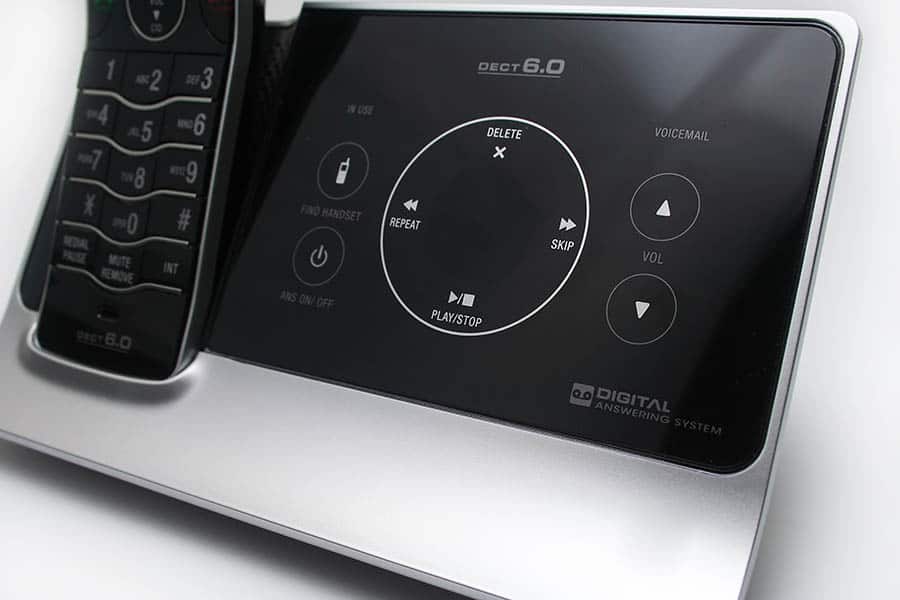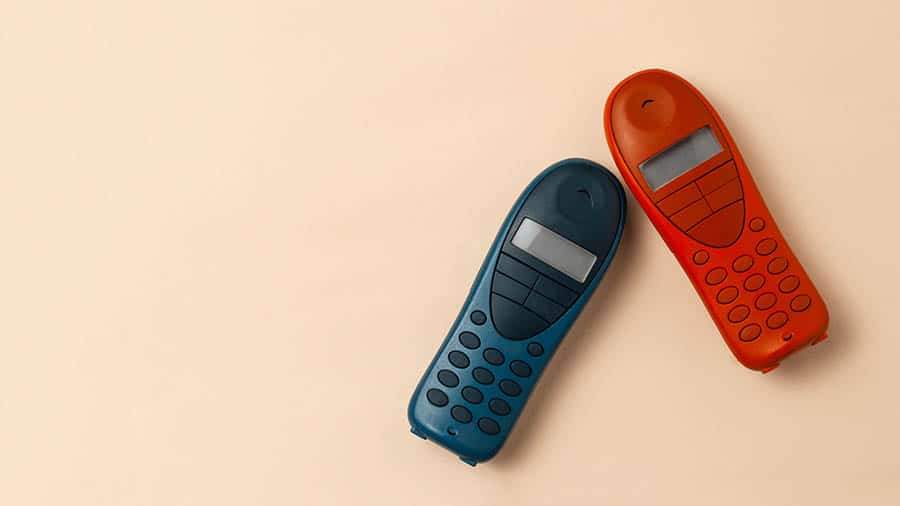When it comes to cordless phones, there are a couple of different confusions people have about them. Whether it’s if cordless phones need to be plugged in or recording calls to your landline, people tend to have a lot of questions about how they work.
But probably the most confusing terminology used within the industry is DECT. It’s understandable that your average person is confused – you’ll often see a phone marketed as DECT, but with no explanation to what DECT is, and what makes it different from any other phone out there.
So, that’s what we’re going to take a look at today – what are DECT handsets, and how do they operate to ensure that your landline phones are running smoothly.
What is a DECT phone?
Although DECT sounds confusing and different to a standard cordless phone, it’s not. DECT stands for Digital Enhanced Cordless Telecommunications. The term DECT phone is just the same as saying a phone that uses wireless technology, or a cordless phone.
So, they’re not anything special or different than your standard cordless phone – it’s just another way of saying it. But if your model is a DECT phone, then it is made to a certain standard that’s accepted pretty much across the world (though the term is mainly used within Europe).
They’re different to a mobile phone, which is fully portable and can be taken with you anywhere. A DECT phone connects to your home landline, so it needs to stay within a certain distance of your phone’s base station for it to work properly.
Just like other kinds of signal that’s transmitted through the air wirelessly, cordless phones work by using radio frequencies. These frequencies vibrate millions or billions of times per second to create a signal between your DECT phone and the base station.
Unlike in America, where cordless phones tend to use the same frequency range as wi-fi and Bluetooth (2.4 GHz), in Europe we prefer to use a different range to avoid any interference. Cordless phones in the UK primarily run between 1880-1900 MHz as to not cause any wireless interference.
This can be pretty confusing, because you’ll often see the term DECT 6.0 used when referencing a DECT phone. Actually, this is just relevant for Americans and Canadians – the 6.0 just refers to DECT phones that run on the same lower bandwidth as our European models do to avoid interference.

Finally, the base station is directly plugged in to your home landline. This works exactly like it would with a corded phone, as each house should be already set up with a landline connection.
Can I use different DECT phones together?
A common question about DECT cordless phones is whether you can use them all together.
For the most part, if they’re the same manufacturers, then you should be able to. Another brand of device may not be fully compatible with an alternate base station, but you may be able to use them within the same household.

But often manufacturers make their devices so they’re only compatible with the same brand e.g Gigaset with Gigaset only. So it makes it really easy for you to connect them to each other, but impossible for you to connect them with other DECT devices.
If the handset and base stations don’t use the same protocols, then you won’t be able to use them within the same wireless system.
Advantages of using a DECT handset
As you’d expect, people opt for these types of phone for a reason – well, several actually. There are a couple of specific reasons that stand out as key reasons for sticking with DECT phones as opposed to mobile handsets and corded landlines.
Call quality
When it comes to phone communication, you want your call to be as clear as possible. If you’re using an internet connection or mobile phone data, then there’s always the chance that the signal could go. This isn’t the case when you’re making landline calls, as it’s very rare you’ll face problems with your home phone line.
DECT phones tend to maintain the best quality when you’re making a simple call between landlines. And actually, they’re usually just as good as corded phones in this regard.
Best option for the elderly
Being able to use a phone with big buttons is a great help to older folk who may not have great eyesight.
Although mobile phones are great, smartphones have made things even more confusing for seniors. You can easily get a specialised DECT phone that has good range, large buttons and an easy to follow process how to use it.

Having these features can make communication a lot more simple, which will definitely help those who are hard of sight or hearing.
No wires/range
Obviously in comparison to mobile phones a handset is more restricted, but they offer more freedom than going for a corded phone. Cordless handsets tend to have a range of around 50 metres, which allows you to sit pretty much anywhere in your house whilst you’re making a phone call.
This is only indoors too. When you take DECT phones outside, they can have a longer range of 200m or even more than this. Sure, it’s not the same as a mobile phone, but it’s still pretty impressive.
VoIP
Something else that you can opt for with DECT phones is VoIP. This won’t be necessary for everyone, and it’s only available in certain models of phone.
But getting a DECT VoIP phone is definitely worth looking into if you make business calls from your home. It’s essentially an integrated internet phone calling system within your DECT handset, and it works much like Skype or Zoom does – calling over the internet.
Whilst they are most office used within the office, you can get home handsets too. They allow you more control over a call, with features like call forwarding, and much larger conference calls too. Though it won’t come built into standard DECT phones, it is definitely worth looking into.
Conclusion
In conclusion, a DECT phone are most often referred to nowadays as cordless phones.
They’re usually made up of two parts; a DECT handset and a base station that you can plug it into to charge whenever necessary. Base stations are then linked to your home telephone line, and it’ll work on whatever internet service you’re signed up with.
In the modern day, using a DECT handset is a good idea if you still like to have a home phone number. They’re still a good alternative to mobile phones, though they don’t quite have the same functionality.